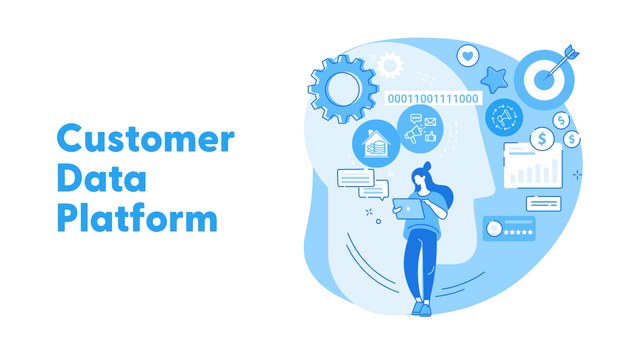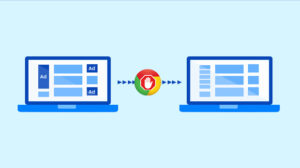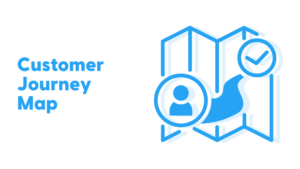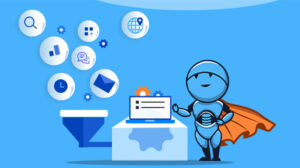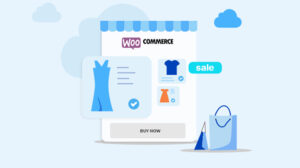A Customer Data Platform (CDP) is a software platform that centralizes customer data from a variety of sources and makes it available to authorized users in a unified, single customer profile. It allows companies to integrate and manage customer data from various sources, such as websites, mobile apps, CRM systems, and marketing automation platforms, in a single platform.
CDPs are designed to help companies better understand and engage with their customers by providing a complete, up-to-date view of customer data in real-time. This can include data such as demographics, behavior, preferences, and interactions with the company across different channels and touchpoints.
Using a CDP, companies can create targeted marketing campaigns, personalize the customer experience, optimize the customer journey, and analyze customer behavior and trends. CDPs can also help companies comply with data privacy and security regulations.
There are many different CDPs available on the market, each with its own set of features and capabilities. Some common features of CDPs include data integration and management, customer segmentation and targeting, real-time data updates, third-party integration, reporting and analysis, and customer journey management.
However, it is important to note that a CDP is more than just a software platform. It is also a strategy and approach to managing customer data that involves people, processes, and technologies. A CDP requires the integration and management of data from various sources, the implementation of data privacy and security measures, and the development of strategies and tactics to use the customer data to improve marketing, sales, and customer experience efforts.
Enterprise Data Model
An enterprise data model is a conceptual model that defines the structure of an organization’s data and how it is used. It typically includes a list of the data entities (e.g., customers, products, orders) and the relationships between them. An enterprise data model can help organizations understand and manage their data more effectively, and it is often used in conjunction with a customer data platform to help integrate and manage customer data from various sources.
Customer 360
Customer 360 is a term used to describe a comprehensive, 360-degree view of a customer. It includes all the data that an organization has about a particular customer, including data from various sources such as websites, mobile apps, CRM systems, and marketing automation platforms. A CDP can help organizations create a customer 360 view by integrating and managing customer data from these various sources in a single platform.
In summary, enterprise data models and customer 360 are related concepts that can be useful in the context of a Customer Data Platform. An enterprise data model can help organizations understand and manage their data, while a customer 360 view can provide a comprehensive view of a customer using data from various sources.
Here’s an example template table for a unified customer profile for an eCommerce business:
| Customer Information | Personalization Data | Purchase History |
| Customer Name | Preferred Product Types | Purchase Date |
| Email Address | Product Recommendations | Product Name |
| Phone Number | Preferred Brands | Quantity |
| Shipping Address | Wishlist Items | Total Purchase Amount |
| Billing Address | Loyalty Points | Shipping Method |
| Payment Method |
Benefits of a Customer Data Platform
There are many benefits to using a CDP, including improved customer insights, personalized marketing and customer experience, improved customer journey management, enhanced data privacy and security, and improved data management. These benefits can help organizations improve their marketing, sales, and customer experience efforts and drive business results.
- Improved customer insights: A CDP can help organizations gain a better understanding of their customers by providing a comprehensive, up-to-date view of customer data. This can include data such as demographics, behavior, preferences, and interactions with the company across different channels and touchpoints. With a CDP, organizations can use this data to gain insights into customer needs, preferences, and trends, which can inform marketing and customer experience strategies.
For example, a retail company that uses a CDP to track customer purchases and website behavior can create targeted marketing campaigns and personalized recommendations for customers. - Personalized marketing and customer experience: A CDP can help organizations create more targeted and personalized marketing and customer experience efforts by using customer data to segment customers and deliver tailored messages and offers.
- Improved customer journey management: A CDP can help organizations track and understand the customer journey across different channels and touchpoints, allowing them to optimize and personalize the customer experience.
- Enhanced data privacy and security: A CDP can help organizations ensure compliance with data privacy and security regulations, such as GDPR and CCPA. It can also help organizations protect customer data by implementing measures such as data encryption, data masking, and user access controls.
- Improved data management: A CDP can help organizations improve their data management practices by centralizing and integrating customer data from various sources in a single platform. This can help organizations avoid the challenges of managing siloed data sources and ensure that they have access to accurate and up-to-date customer data.
How can CDP improve Customer Segmentation
A CDP can improve customer segmentation by providing a comprehensive, up-to-date view of customer data, enabling real-time data updates, allowing for customized segmentation, and providing insights and analysis on customer segments.:
- Data integration: A CDP can help organizations integrate customer data from various sources, such as websites, mobile apps, CRM systems, and marketing automation platforms, in a single platform. This can provide a more complete and accurate view of customer data, which can be used to create more targeted and effective customer segments.
- Real-time data updates: A CDP can provide real-time updates to customer data, allowing organizations to create more accurate and up-to-date customer segments. This can be particularly valuable in industries where customer preferences and behavior change rapidly, such as in eCommerce and retail.
- Customized segmentation: A CDP can allow organizations to create customized customer segments based on a wide range of data points and criteria. This can help organizations create more targeted and effective marketing and customer experience efforts that are tailored to the specific needs and preferences of different customer segments.
- Segmentation insights and analysis: A CDP can provide insights and analysis on customer segments, allowing organizations to better understand the characteristics and behaviors of different customer segments. This can help organizations tailor their marketing and customer experience efforts to the needs and preferences of different customer segments.
Also, read:
How CDP can be used for Customer Journey Management
A CDP can be used for customer journey management by providing insights into customer behavior and preferences, enabling personalized and optimized experiences, and helping organizations measure the effectiveness of their efforts.:
- Tracking customer interactions: A CDP can help organizations track customer interactions with the company across different channels and touchpoints, such as websites, mobile apps, email, and social media. This can provide valuable insights into customer behavior and preferences, which can inform customer journey management efforts.
- Personalizing the customer journey: A CDP can help organizations personalize the customer journey by using customer data to deliver tailored messages and offers at different stages of the journey. For example, a retail company that uses a CDP to track customer purchases and website behavior can use this data to create personalized recommendations for customers based on their interests and needs.
- Optimizing the customer journey: A CDP can help organizations optimize the customer journey by analyzing customer behavior and identifying opportunities to improve the customer experience. For example, a financial services company that uses a CDP to track customer interactions and preferences can use this data to identify bottlenecks in the customer journey and implement strategies to improve the customer experience.
- Measuring the effectiveness of customer journey management efforts: A CDP can help organizations measure the effectiveness of their customer journey management efforts by tracking key metrics such as customer engagement, conversion rates, and customer satisfaction. This can help organizations identify areas for improvement and adjust their strategies as needed.
Challenges in Implementing a Customer Data Platform
There are several challenges that organizations may encounter when implementing a Customer Data Platform (CDP). These challenges include data integration, data privacy and security, data quality, data governance, change management, and cost and resources. It is important to carefully plan and manage these challenges to ensure a successful CDP implementation.
- Data integration: One of the main challenges in implementing a CDP is integrating data from various sources. This can be complex and time-consuming, as it requires gathering data from multiple systems, reconciling differences between data sources, and ensuring that the data is accurate and up-to-date. Also, read – Modern Data Stack
- Data privacy and security: Ensuring compliance with data privacy and security regulations, such as GDPR and CCPA, can be a challenge when implementing a CDP. This may involve implementing measures such as data encryption, data masking, and user access controls.
- Data quality: Ensuring the quality of the data in a CDP is important, as poor quality data can lead to incorrect insights and decisions. Maintaining the quality of the data in a CDP can be challenging, as it requires ongoing efforts to cleanse, validate, and enrich the data.
- Data governance: Establishing clear data governance policies and procedures is important for a CDP, as it ensures that the data is used ethically and responsibly. However, establishing these policies and procedures can be challenging, as it requires the alignment of different stakeholders within the organization.
- Change management: Implementing a CDP involves significant changes to an organization’s data management practices and systems, which can be disruptive. Managing these changes and ensuring that they are adopted successfully can be a challenge.
- Cost and resources: Implementing a CDP can be costly and resource-intensive, as it requires significant investments in development, testing, and maintenance. Ensuring that the benefits of the CDP justify the costs can be a challenge.
How to build a Customer Data Platform
Building a Customer Data Platform (CDP) typically involves the following steps:
- Define your goals and objectives: The first step in building a CDP is to define your goals and objectives. What do you hope to achieve with your CDP? What kinds of customer data do you want to collect and manage? What are your key business objectives, and how will a CDP help you meet them?
- Gather and organize your customer data: The next step is to gather and organize your customer data from various sources. This may include data from websites, mobile apps, CRM systems, marketing automation platforms, and other sources. You will need to determine what data to collect, how to collect it, and how to store it in a centralized location.
- Implement data privacy and security measures: It is important to ensure that your CDP is compliant with data privacy and security regulations, such as GDPR and CCPA. This may involve implementing measures such as data encryption, data masking, and user access controls.
- Integrate your CDP with other systems: You may want to integrate your CDP with other systems and tools, such as CRM systems, marketing automation platforms, and analytics tools. This can help you get the most value out of your CDP by allowing you to use it in conjunction with other technologies.
- Develop strategies and tactics: Once your CDP is up and running, you will need to develop strategies and tactics for using it to improve marketing, sales, and customer experience efforts. This may involve segmenting customers, creating targeted campaigns, and analyzing customer behavior and trends.
- Monitor and optimize: Finally, it is important to monitor and optimize your CDP on an ongoing basis. This may involve reviewing metrics and performance, making adjustments to your strategies and tactics, and integrating new data sources as needed.
Building a CDP is a complex process that requires careful planning, data management expertise, and the right tools and technologies. It is important to carefully consider your goals and objectives and to work with experienced professionals to ensure that your CDP is successful.
“Build vs Buy” Customer Data Platform
There is no one-size-fits-all answer to the question of whether it is better to build or buy a Customer Data Platform (CDP). The best approach for your organization will depend on a variety of factors, including your goals, resources, and expertise.
Here are some pros and cons to consider when deciding whether to build or buy a CDP:
Pros of building a CDP:
- Customization: Building a CDP allows you to customize the platform to meet the specific needs and goals of your
- organization.Control: Building a CDP gives you complete control over the platform and how it is used.
- Ownership: Building a CDP allows you to own the platform and the data it manages, which can be important for data privacy and security.
Cons of building a CDP:
- Cost: Building a CDP can be costly, as it requires significant investments in development, testing, and maintenance.
- Time: Building a CDP can be time-consuming, as it requires the development of a detailed plan, the gathering and organization of customer data, and the integration of the platform with other systems.
- Expertise: Building a CDP requires specialized expertise in data management and software development, which may not be readily available within your organization.
Pros of buying a CDP:
- Time: Buying a CDP can be faster than building one, as you can leverage an existing platform that has already been developed and tested.
- Cost: Buying a CDP can be less expensive than building one, as you can spread the cost over time through subscriptions or licensing fees.
- Expertise: Buying a CDP allows you to tap into the expertise and support of the vendor, which can be helpful if you do not have in-house expertise in data management or software development.
- Few popular CDPs in market are: Segment, Treasure Data, Redpoint Global, BlueConic, Tealium AudienceStream etc.
Cons of buying a CDP:
- Customization: Buying a CDP may not allow you to customize the platform to meet the specific needs and goals of your organization.
- Control: Buying a CDP may involve relinquishing some control over the platform and how it is used to the vendor.
- Ownership: Buying a CDP may involve sharing ownership of the platform and the data it manages with the vendor.
In summary, whether it is better to build or buy a CDP will depend on your organization’s specific goals, resources, and expertise. It is important to carefully consider the pros and cons of each approach and choose the option that is most suitable for your needs.
How can a fractional data team and a data warehouse help you set up a Customer Data Platform
A fractional data team and a data warehouse can be useful resources when setting up a Customer Data Platform (CDP).
A fractional data team is a team of data experts who work on a part-time or project basis, rather than as full-time employees. A fractional data team can be a cost-effective way to bring in specialized expertise and support for data-related projects, such as setting up a CDP. A fractional data team can help you with tasks such as gathering and organizing customer data, implementing data privacy and security measures, and integrating the CDP with other systems.
A data warehouse is a centralized repository of data that is used for data analysis and reporting. A data warehouse can be a valuable resource when setting up a CDP, as it allows you to store and manage customer data in a single location. A data warehouse can help you organize and structure your customer data in a way that is optimized for analysis and reporting, and it can provide a single source of truth for customer data across your organization.
In summary, a fractional data team and a data warehouse can be useful resources when setting up a CDP. A fractional data team can provide specialized expertise and support, while a data warehouse can provide a centralized repository for storing and managing customer data. Together, these resources can help you set up and manage a successful CDP wherein you own all your data and have the added flexibility of customizations.
Conclusion
A Customer Data Platform is a powerful tool for businesses looking to unlock the full potential of their customer data. By providing a unified view of customer interactions across various touchpoints, a CDP enables businesses to improve personalization, increase customer satisfaction, and drive revenue growth.
Saras Analytics is uniquely positioned to help businesses maximize the benefits of a CDP. With a state-of-the-art platform, dedicated experts, and proven processes, we can help you collect, analyze, and leverage your customer data to its fullest potential. Whether you’re looking to improve marketing, sales, or customer service, partnering with Saras can help you achieve your goals and drive success for your business.
